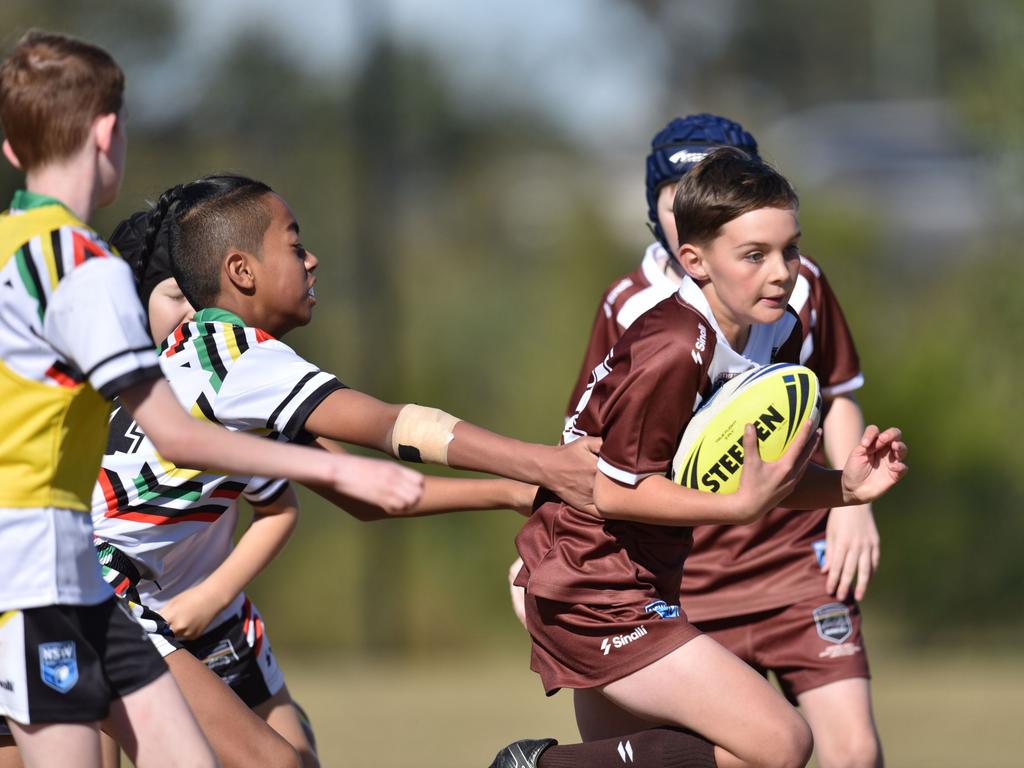New Weight-for-Age Rugby League in NSW Makes the Game Fairer and Safer for Kids
The Penrith Panthers, current NRL champions, have taken a big step in junior rugby league by starting New South Wales’ first weight-for-age competition. This major change is aimed at making the sport more inclusive and safer for young players, especially those who may have felt left out or quit due to size differences with other players.
The new league allows 11- and 12-year-old kids who weigh 50 kilograms or less to play regular 13-a-side tackle rugby. The Panthers Juniors General Manager, Blake South, leads the new program. The idea had been discussed for years as a way to balance the physical mismatch often seen in youth sport, and it quickly came together within a month.
“The level of interest blew us away,” Mr. South said. “We had about 110 kids express interest in just the first 15 minutes. It was amazing.”
In only four weeks, the Panthers went from planning to holding the first official round of games. The competition now has 10 teams and 200 registered players. All matches take place at one location every Sunday for eight weeks, ending in finals. Participation is free, and each player receives a traditional Panthers jersey as a bonus.
Mr. South said the primary goal is skill development without the fear of getting hurt by much larger opponents. The quick success of the new competition has drawn attention from other clubs across the state and even the country.
He pointed out that a recent trial in Queensland involved just six teams from the Tweed and Gold Coast areas, while Penrith managed 10 teams within their own region.
Mr. South recalled a conversation with one parent at the opening match: “She came up to me and said, ‘Thank you so much—my son hasn’t played since he was seven.’”
This was the case for Kirsty Steel and her 11-year-old son Declan Stone. Declan, who weighs just 34 kilograms, had always wanted to play rugby, but Kirsty was too worried about his safety due to the size of other kids.
“He’d only played soccer until this came up,” she explained. “When he found out about the weight-for-age competition, he asked to join. At first, he was nervous because he didn’t know what to expect, but once he started playing, he absolutely loved it.”
Declan, a huge fan of Panthers winger Brian To’o, who weighs nearly 60kg more than him, had a fantastic time. His favorite moment? Watching his teammate score the team’s first try and running over to celebrate.
The Panthers hope this initiative will bring more families and young players back to rugby league. Mr. South is already thinking ahead, aiming to expand the competition into a year-long event that runs alongside traditional Saturday leagues. He also hopes to include younger players, starting from under-8s, and extend the format up to under-14s.
This new format acknowledges the wide range of physical development in kids of the same age. While traditional junior competitions are grouped strictly by age, weight-related leagues are designed to level the playing field and reduce the risk of injury and stress for smaller children. These competitions help kids feel more confident, enjoy the game, and improve their skills.
Weight-for-age rules aren’t entirely new. Queensland held a similar carnival in Brisbane in 2019. The Penrith competition builds on that idea, showing how it can work on a larger scale and potentially become the norm in junior leagues.
Other Sports and Their Approach to Junior Safety
Rugby League isn’t the only sport considering changes to better protect young players.
Rugby Union introduced age-weight rules back in 2018 for players aged 10 to 15. This came after a two-year study by Rugby Australia in partnership with the Sydney Junior Rugby Union, the ACT Brumbies, and Australian Catholic University. These rules help reduce mismatches between players and support safer gameplay.
AFL, concerned that some parents saw the sport as too rough, recently updated its junior program through the 2025 “Junior Footy Toolkit.” Though not weight-based, these changes include adjustments to field size, match length, and team numbers to suit children’s age and development level. With support from researchers like Deakin University, AFL found that such changes led to a 35% rise in player involvement.
Soccer also has flexible rules that allow some junior players to play in a lower age group if needed. This ensures children can play with peers closer to their physical or skill level, improving safety and enjoyment.
A Real Impact on Families
The Penrith competition has already made a real difference for families like the Steels. Kirsty shared how she had kept Declan away from rugby because of her fears, even though he always wanted to play. With the new league, he finally got the chance—and it didn’t disappoint.
Declan couldn’t stop talking about his game afterward, and his joy on the field was clear. Seeing her son so happy and safe was a huge relief for Kirsty and a reminder of why changes like this matter.
What’s Next?
As interest grows, more teams and age groups may join the movement. The Panthers’ success story is a strong example for other clubs, showing that weight-for-age competitions can be popular and effective. With hundreds of kids getting a chance to safely enjoy the sport they love, the future of junior rugby league may look very different—and much fairer.
Whether it’s through weight-based categories or rule adjustments for younger age groups, these changes across sports share one goal: giving all children the c
hance to play safely, confidently, and with joy.


